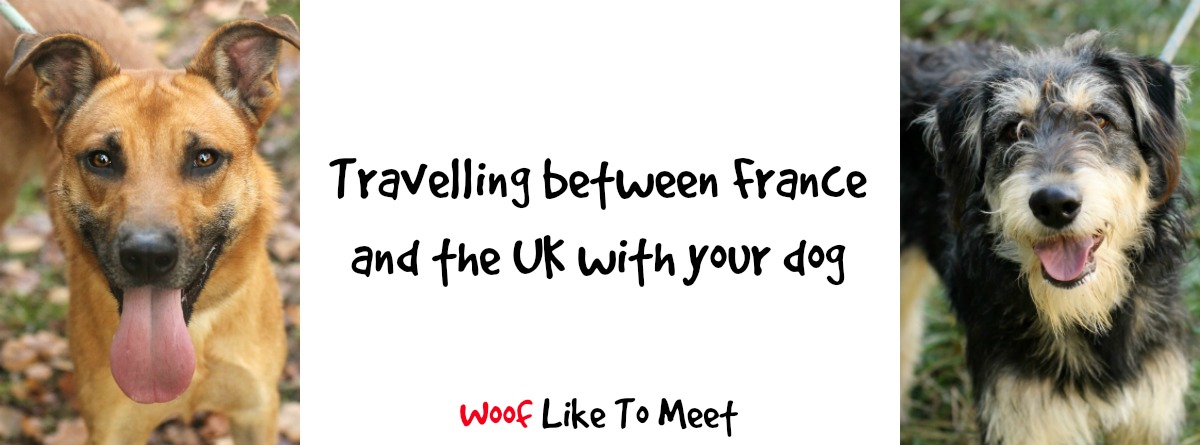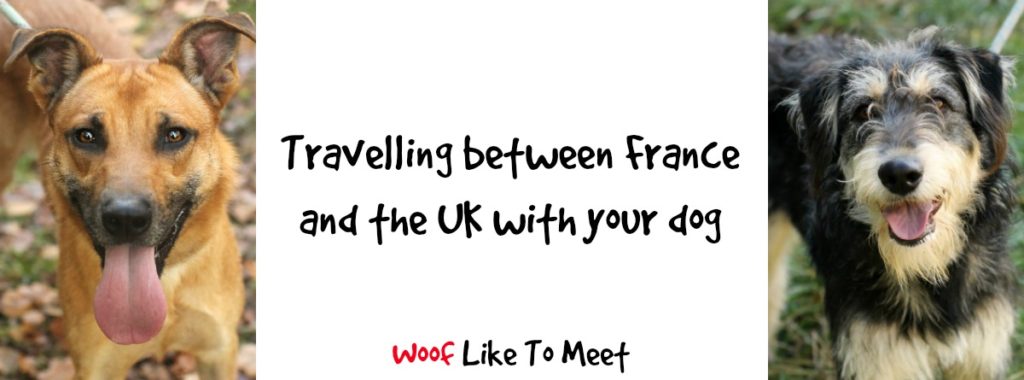Many people these days take advantage of EU laws making it easier to transport domestic animals between the UK and France. Gone are the times of long quarantines. Hopefully, DEFRA will continue to honour the EU passport as the UK leaves Europe. Only time will tell.
There are three main ways that pets travel to the UK from the continent. One is with their owners. Another is with a pet transfer service. The final way is as a newly adopted animal into the UK from a shelter or rescue association on the continent. The system for transferring animals from a shelter in France to a home in the UK is different and usually follows a system called TRACES which helps track animals and ensure that their health is regularly checked.
Travel with owners
For the most part, pets who travel with their owners are either travelling on holiday to the UK or on holiday to France.
All major crossings accept dogs.
For details of P&O crossings with pets from Dover to Calais, click here
For details of DFDS crossings with pets from Newhaven to Dieppe, Dover to Calais and Dover to Dunkirk, click here
For details of Brittany Ferries crossings with pets from Portsmouth to Caen, Poole to Cherbourg, Portsmouth to Cherbourg, Portsmouth to Le Havre, Plymouth to Roscoff, Plymouth to St Malo, or Portsmouth to St Malo, click here
Longer ferry crossings usually have kennels in which you can put your dogs, and shorter crossings usually expect your dog to stay in the car. Please be aware that you cannot stay in the vehicle bays with your animals so you will have to leave them for the journey or return to your vehicle only if accompanied by a member of staff. This has implications for dogs who have separation anxiety or who may find the voyage stressful. Foot passengers cannot usually travel with dogs.
You can also travel by Eurotunnel. This is ideal if you wish to stay with your pet and if you want the shortest crossing time.
Several airlines also fly dogs in the hold on short and long-haul flights. Some airlines have a maximum weight for dogs they will accept. Occasionally, airlines will fly dogs of less than certain weights in the cabin. Both Air France and British Airways will fly pets. In some cases if the combined weight of the dog and its crate are more than certain weights, your pet will be required to travel freight. For very long journeys, the advantages of flying a pet may outweigh the disadvantages, especially in comparison to leaving a dog for long periods of time in kennels on a ferry.
All cross-channel services require you to follow the PETS passport scheme.
Travel with a pet transfer service
Several companies exist to take animals back to the UK for you. These can be expensive and spaces are booked well in advance, particularly at peak times (summer holidays and Christmas). If you intend to use a pet transport service, book well in advance and make sure you have all the details of your animal to hand. You will be expected to pay in advance, have photocopies of all relevant passport pages and conform to their standards. Spaces for bigger dogs often go more quickly. Check that vans are suitable for transporting animals, and that regular breaks are scheduled. If you have a nervous or flighty dog, this may not be the most suitable method for them. Expect to pay at least 200€ for transport from France to the UK and to book a good few weeks in advance. Also, it is worth bearing in mind that communication from pet transfer services can be quite poor if they are on the road.
PETS passport system
Whether you are travelling with your pet or not, the PETS travel system is a simplified way to ensure animals are transported without the need for long quarantine periods.
The first requirement is that your dog is microchipped. Please be advised that there have been some issues with animals who have been tattooed. It is worth checking with the carrier. DEFRA specifically requests animals be microchipped.
Once your dog has been microchipped, they can be vaccinated against rabies. Usually this is done on the same day. The vet will complete an EU pet passport for you. All of the animal’s essential details must be included. Please note that changes came into play at the end of 2014, and that passports must have sealed sections so that they cannot be tampered with.
The passport includes:
- Owner details
- A description of the animal
- Markings or colour
- All relevant rabies stamps, stickers and signatures
- Details of the vet issuing the passport
- Details of tapeworm treatments
For dogs travelling from France, they do not need to have a blood test to prove the efficacy of the rabies vaccination. You can only travel twenty-one days after the rabies vaccination has been administered.
A vet must have administered a tapeworm treatment (and recorded it) not less than 24 hours before the crossing and not more than 120 hours (five days) before the time of the crossing. The treatment must include praziquantel or an equivalent. For short trips from the UK, you will need to administer the wormer before you leave and worm 28 days later.
Some transport companies may require you to have a letter from the vet before you leave certifying that the animal is in good health.
You can find clear details about the PETS travel scheme on the DEFRA website.
Travel from a foreign shelter (TRACES)
If you have adopted an animal from a foreign shelter and the dog is being brought to England, you will need to follow additional guidance. This is called the TRACES tracking system.
There are rules in place to ensure animals are not trafficked across borders. These rules are the same for animals from breeders on the continent, who must also adhere to these rules.
The shelter will contact the department vet around 48 hours before the animal is due to travel. A shelter or association must have been approved before this point by the department vet. At Mornac, our team contact the state vet with all the necessary information, including your address. The state vet then issues a certificate (usually duplicate) that needs to travel with the animal and its passport.
The shelter or association is not the only side with obligations: you must notify your nearest animal health office in the UK at least more than twenty-four hours before the animal is due to arrive. They reserve the right to ask you to go to the centre with the animal, to visit the animal or even to ask for the animal to stay in quarantine.
Although you will find a number of unscrupulous “charities” transporting dogs from various shelters in Europe, please be careful. There are daily arrests at Calais of people who are transporting animals without passports or TRACES paperwork. These animals are often transported in articulated lorries without adequate air. Some of them are driven over seventy hours without breaks. Even some very well-known charities in Europe transport large numbers of animals (around 70) on one crossing in one container, running the risk of getting caught against the profit of doing it without paperwork (some charge around 400€ to transport and adopt an animal).
Every single time a rescue in Europe transports animals without the right paperwork, without proper microchips, without rabies vaccinations or wormers, they increase the chance that the UK will return to a quarantine system or that animals will not be allowed to be adopted directly from the continent. These unscrupulous rescues and individuals spoil it for the rest of us, who happily microchip and vaccinate our dogs, who take them for vet visits, get all of their TRACES paperwork in place and vet homes very carefully. With thousands of dogs put to sleep every year in the UK, please consider your choices carefully. Although we are happy to help you adopt breeds that are rare in the UK, we are also mindful of how complicated it can be if things go wrong. A large number of our popular breeds that are less familiar in the UK are dogs who have lived outside, have lived as part of large packs or have been used to working. For that reason, we undertake extensive interviews and expect you to keep in touch at every point of the adoption process.


